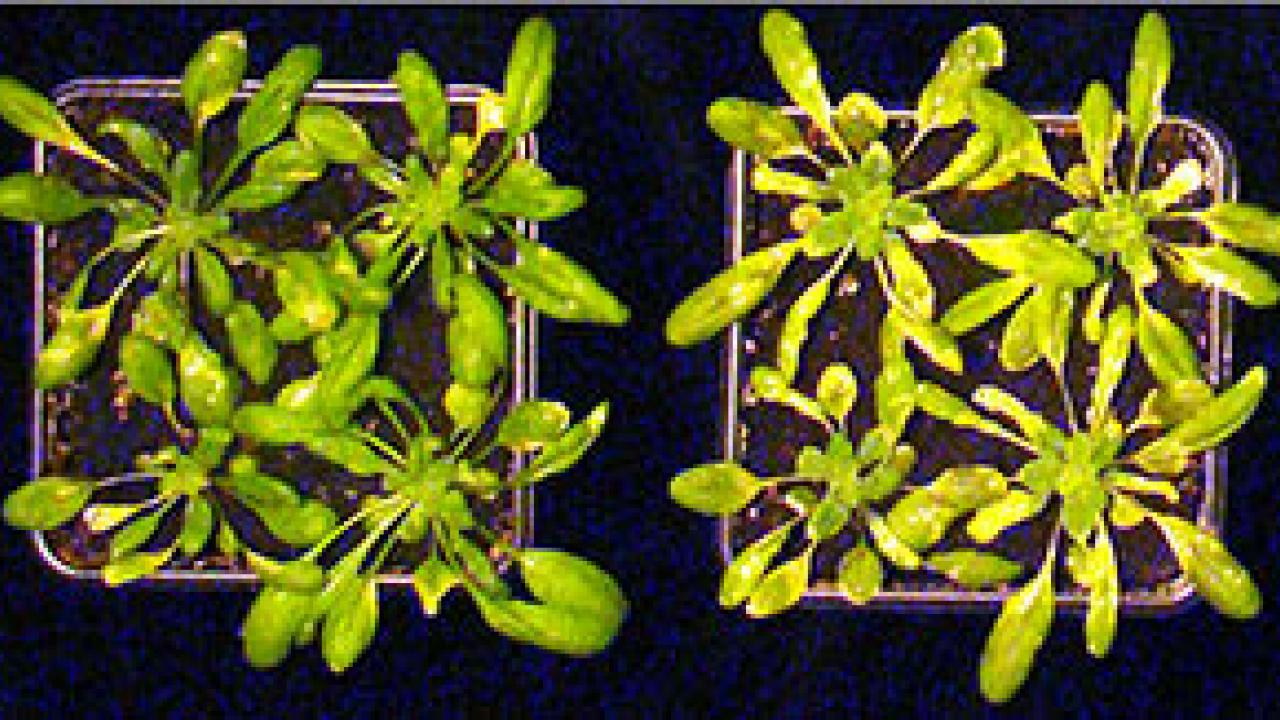Long before nations devised complex military strategies, plants had their own built-in systems for thwarting potential attacks by disease-causing microbes.
Two new players in this mutual seek-and-destroy struggle between the plant and microbial worlds have been identified by an international team of researchers, including a plant scientist at the University of California, Davis.
Findings from the study are published online today in the journal Science.
“In this study, we showed that a biochemical process known as tyrosine phosphorylation is important to the plant’s immune signaling system,“ said study co-author Benjamin Schwessinger, a Human Frontier Science Program postdoctoral fellow in the UC Davis Department of Plant Pathology. Schwessinger initiated the work when at The Sainsbury Laboratory in Norwich, U.K.
“Furthermore, we demonstrated that a certain plant receptor that recognizes the presence of the Pseudomonas syringae bacterium also becomes the target for a counterattack when that bacterium attempts to fight back and suppress the plant’s immune system,” he said.
Plants’ innate, or built-in, immunity relies on the ability of molecular receptors on the surface of the plant cells to identify specific groups of molecules on the invading microbe, or pathogen. When a plant cell receptor recognizes such a group of molecules, it triggers the plant’s immune response to swing into action and battle the invading pathogen.
In this study, using the Arabidopsis plant as a model, the researchers showed for the first time that tyrosine phosphorylation is an important part of the “molecular code” for how a plant immune receptor, known as EFR, signals the presence of the EF-TU protein on Pseudomonas syringae, a disease-causing bacterium that infects a wide range of plant species.
Attacking bacteria, not to be outwitted by the plant’s immune response, tend to launch something of a counter-offensive by injecting proteins inside the plant cell.
In this study, the researchers discovered that the Pseudomonas syringae bacterium delivers its counter-punch to the plant’s immune response in the form of an enzyme called HopAO1. The enzyme has been known to researchers for about a decade, but this study was the first to identify which molecules it targets inside the plant cell.
“In effect, the plant and the attacking bacteria battle to take control of the biochemical process that initiates the plant’s antibacterial immunity,” Schwessinger said.
Other researchers on this study were Alberto Macho, Vardis Ntoukakis, Cécile Segonzac, Sonali Roy, Jan Sklenar, Paul Derbyshire, Rosa Lozano-Durán, Frederikke Gro Malinovsky, Jacqueline Monaghan, Frank L. Menke and Cyril Zipfel, all of the Sainsbury Laboratory, U.K.; Alexandre Brutus and Sheng Yang He, both of Michigan State University; and Man-Ho Oh of the University of Illinois, Urbana, and Chungnam National University, Korea.
Funding for the study was provided by the Gatsby Charitable Foundation, European Research Council, United Kingdom Biotechnology and Biological Sciences Research Council, U.S. Department of Energy, U.S. National Institutes of Health, the Gordon and Betty Moore Foundation, National Science Foundation, and the U.S. Department of Agriculture.
Media Resources
Pat Bailey, Research news (emphasis: agricultural and nutritional sciences, and veterinary medicine), 530-219-9640, pjbailey@ucdavis.edu
Benjamin Schwessinger, Plant Pathology, (530) 309-5128, benjamin.schwessinger@gmail.com
Cyril Zipfel, The Sainsbury Laboratory, +44 1603 450056, cyril.zipfel@tsl.ac.uk
